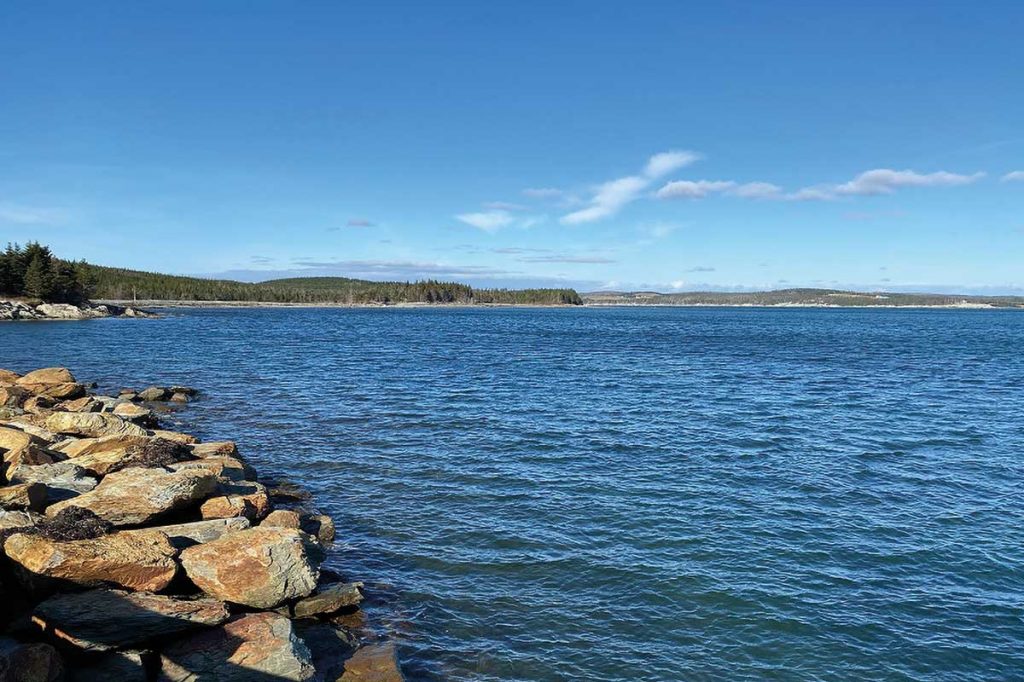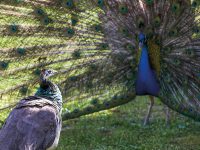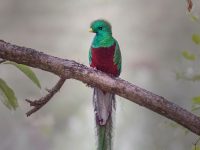Interview with Lori Marino
«Captivity seriously damages the brains of intelligent mammals»
Neuroscientist and expert in animal behavior

Having taught at Emory University (Atlanta, US) for two decades, Lori Marino is the founder and Executive Director of The Kimmela Center for Animal Advocacy and founder and President of the Whale Sanctuary Project, a place where zoo cetaceans can recover from the terrible consequences of captivity and live in conditions that are as close as possible to natural conditions. She is also a Creative Affiliate at the Safina Center in New York.
She has studied dolphin and whale neuroanatomy for thirty years, showing that the brains of dolphins are as complex as those of great apes. In 2001, she co-authored with Diana Reiss the first study showing mirror self-recognition in bottlenose dolphins. They employed the Gallup test, which involves surreptitiously placing a mark on the body of a child or animal, to see if, when they see themselves in the mirror, they act in a way that indicates they realize the mark is not part of their normal self
More recently, she has been working with Bob Jacobs on the neural consequences of captivity. She was interviewed in the documentaries Blackfish (2013), Unlocking the cage (2016), Long gone wild (2019), and Seaspiracy (2021).
I have admired her research for many years and so I was extremely happy when she contacted me in response to an article I published with Peter Singer in The Journal of Animal Ethics, «The threat of great ape extinction from Covid-19», which cited her work. This is the origin of this interview.
What were the main difficulties you encountered in working to become an expert on cetaceans?
There were not many difficulties at all. Perhaps one is that there are relatively few people anywhere who are studying cetacean brains and I had to work to seek out the experts and the experiences. Maybe the most annoying part was the fact that the study of dolphins is one that engenders a «woo woo» reaction in some people. [So that readers know, «woo woo» refers to unconventional or outlandish beliefs with little or no scientific basis, such as astrology, crystal healing, and clairvoyance.] In the 1960s John Lilly pioneered the study of dolphin brains but he used several unethical methods, such as giving them LSD. Eventually he went far beyond the science and into the pseudoscience realm. When I was a student, I went out of my way to denounce Lilly’s antics. Things are different now and the study of dolphin brains, dolphin minds, and dolphin behavior is taken as seriously as any other scientific pursuit.
Could you explain to the general public some of your findings regarding the effects of captivity in cetaceans?
The long-term effects of captivity can be profound – leading to early death. We have found that the most valid explanation for the poor welfare in captivity is that the chronic stress eventually leads to immune system dysfunction, which then leads to brain atrophy and increased vulnerability to infection. The three areas in which captive cetaceans suffer are opportunistic infections, behavioral disorders, and social dysregulation. For instance, captive whales suffer from frequent opportunistic infections. The most common cause of death is pneumonia, followed by gastric disorders, encephalitis, meningitis, and candidiasis. These infections occur when the immune system becomes compromised. Thus, their predominance in captive cetaceans is suggestive of a damaged immune system.
«I cannot imagine a complex being like an elephant or a cetacean not being harmed from being held in an impoverished environment»
Captive whales also show evidence of brain damage. Behavioral abnormalities such as stereotypies, self-harm, and hyper-aggression, are always indicators of harm to the brain. Stereotypies are highly repetitive behaviors, e.g., circling, banging the body against the sides of the tank, grating the teeth on hard surfaces, etc., that are due to a dysregulation of neural circuits in the brain. We also see anorexia and symptoms of depression, such as inactivity. The inactivity can be floating still on the surface (which is called logging) or even laying on the bottom of the tank or in a corner with their head towards the walls. Finally, captive dolphin social interactions in the tanks are highly abnormal and result in aggression not observed in the wild, poor parenting and attachment, and other social problems that cause trauma. The trauma is passed on intergenerationally.
We see some such behaviors in apes too. In fact, a large study conducted by Lucy Birkett and Nicholas Newton-Fisher published in PLOS ONE in 2011 showed that all captive chimpanzees, including those living in large enclosures and having various forms of enrichment, showed signs of mental illness. Will a similar study of cetaceans or elephants support similar conclusions?
Yes, and we already have evidence of mental illness in captive elephants and cetaceans. There will always be individual differences, but I cannot imagine a complex being like an elephant or a cetacean not being harmed, in some way, from being held in an impoverished environment for a long time. Enrichment is of limited effectiveness because it cannot match the stimulation, challenges, and complexity of a natural physical and social environment.
Living in a small pool is bound to be bad for the physical health of a creature that has evolved to cross the oceans and explore vast territories. Could confinement be even worse for the mental health of very intelligent species like whales, dolphins, elephants, and apes?
Absolutely. The psychological stress of confinement can be even worse than the physical aspects of captivity because captivity limits the range of choices one can make. It severely limits autonomy. Autonomy is the freedom to choose what you do and when. In a cage or tank, you have no choice about who you live with, what you eat, what you do, where you go, etc. Moreover, intelligence comes with the need to be stimulated and challenged by other animals, the environment, problems… In zoos and marine parks, the environments are so impoverished and monotonous that there is very little to explore or be challenged by. And that is extremely stressful for any intelligent being. Zoo and marine park staff try to make the environment more interesting for the animals with «enrichment objects» (toys, for instance) and they do sometimes help temporarily. But enrichment does not come close to the complexity of a natural environment and the animals tend to get bored with them quickly.

Is neuronal atrophy comparable to muscular atrophy?
Neuronal atrophy is similar to muscular atrophy in that it means the neuron either shrinks, becomes less connected to other neurons, or actually dies. Neuronal atrophy can have many cognitive and behavioral consequences depending upon where it occurs in the brain. Muscle atrophy is more limited to the specific part of the body the muscle is in. An example of neural atrophy would be the effects of chronic stress on the hippocampus – the part of the brain involved in memory, cognition, processing emotions. When that atrophies, the impacts are widespread. The same is true of the neocortex – another part of the brain that is damaged by chronic stress.
Could your findings regarding the neural effects of captivity be relevant to understanding the effects of captivity or confinement in humans too?
Yes, very much so. We have evidence that humans who grow up or live in highly impoverished environments are impacted neuronally, behaviorally, and cognitively. What is important to note about the effects of long-term captivity is that they tend to be similar across species, including humans. All brains share similar structures that are similarly affected by confined impoverished environments. And while there are always differences between species, there are more similarities than one would think. This is because much of the brain is conserved evolutionarily and that means the same systems serve the same functions across species. One example is the limbic system. It is involved in processing emotions, memory, and some forms of cognition and it is conserved in all vertebrates. And because limbic structures are involved in processing emotions then they are highly impacted by stress, and that is the case across all species that have been examined.
Could you give some examples of the convergent evolution of complex cognitive abilities in cetaceans and apes, besides the capacity to recognize themselves in a mirror?
Given the fact that primates and cetaceans have not shared an ancestor in about 95 million years, any shared cognitive capacities that emerged in each lineage are technically convergent. These include the ability to comprehend a simple syntactic symbolic language, tool use, certain social factors, metacognition, or the ability to imitate. However, we know that many animals, such as elephants, pigs, dogs, some birds, and even invertebrates possess similar cognitive capacities. So, I am beginning to think that there is much more going on than just convergence between great apes and cetaceans.
Why do you think some cetaceans have become self-aware and generally so intelligent? What evolutionary pressures could have produced this?
I think self-awareness might be a dimension in the animal kingdom and some taxa express self-awareness in a similar way to humans. Why cetaceans, elephants, and great apes recognize themselves in mirrors when other intelligent animals do not, is really not known. I can say that it has something to do with them all having large brains, or being highly social, but in the end, those are just hypothesis that are not very specific. It could simply be that these taxa have reached a certain level of cognitive complexity but that is not a very satisfying explanation.
«Whales and dolphins evolved in the oceans and that is the only place they can thrive»
I was sure that dolphins were going to pass the Gallup test for self-awareness and was waiting for somebody to prove it. Could you explain some of the difficulties of the test that show why others before you failed?
There was only one other lab, in Hawaii, that was interested in the dolphin mirror issue. They did some pilot studies and obtained some very tantalizing evidence but were never able to confirm the findings. We were the first to perform a test that could confirm that the dolphins were actually viewing themselves in the mirror. It is not an easy thing to test. Self-awareness is a highly subjective feature of the mind and so it requires carefully thinking about ways you can falsify the hypothesis that they are using the mirror to view themselves. The test is a challenge methodologically, especially for an animal without hands, and perhaps that discouraged others. We spent over a year conducting the study and we implemented numerous control conditions in order to make the study air-tight so that the criteria the dolphins had to meet in order to show that they recognized themselves in mirrors were very stringent. It is easy to «see what you want to see» in these kinds of studies and so we had to make sure that what we saw the dolphins do was interpreted properly and rigorously.
Is the fact that cetaceans do not go to sleep fully a major problem for the Gallup test?
No, because we did not mark them when they were asleep. We used a sham marking procedure instead. In other words, sometimes we used a marker that had ink, other times we used a marker with no ink (sham mark), other times we did not touch them but just called them over to the marking station (no mark). All these controls allowed us to interpret their behavior when they were marked and when they were not marked.
Why are we not placing mirrors in orca and beluga enclosures to test self-awareness, to collect indirect anecdotal evidence and to make the pool more interesting for them?
We certainly can do that and much more. I think one reason why this is not done is because the findings of self-recognition tend to cause people to question whether these animals should be in tanks. Another reason is that it might cause disruption in the social relationships in the tank, as often the self-recognition does not occur right away. So, it might be too confusing or even dangerous, as some of the whales might wat to attack the image initially.
Many cetaceans, from bottlenose dolphins to sperm whales, emit signature sounds functioning as proper names with which they introduce themselves to a group. Does this not indicate they are likely to have a sense of themselves as individuals?
I think signature whistles can be one indicator of self-awareness but I am not sure it is the most direct one. Signature whistles indicate that they understand individuality. How deep that goes, cognitively, is another question.
I find it very interesting that it is female dolphins we see making bubble rings or using sponges to protect their noses. I wonder if there are visible sex differences in the brains of cetaceans that may be similar to the differences we see in hominids and have emerged in connection with maternal care.
Yes, much of the cultural innovation and transmission in other animals occurs from mother to child. I think this is because mothers tend to be the ones who spend the most time with the next generation and can pass on learned behaviors more easily than males. Your question about whether there are sex differences in the brains of cetaceans is a really interesting one, but we do not have enough information to address it. We would need a very large sample size of brains and that does not exist right now.
How likely is it that cetaceans have additional cognitive capacities (perhaps associated with echolocation) that we do not even know about because we do not have these capacities ourselves, and so, do not know how to test them?
I think it is very likely that they have cognitive abilities we do not have.
We know orcas, belugas and bottlenose dolphins have extraordinary abilities because though they suffer terribly, they do not die in captivity very soon. How likely is it that at least other toothed whales, like sperm whales and pilot whales, and maybe even some baleen whales like humpbacks, have comparable capacities?
I think all cetaceans share certain capacities because they all have large well-developed brains but there are also species differences in terms of level of sociality and other factors. In particular some species, like the vaquita or the river dolphins, do even more poorly in captivity than bottlenose dolphins, belugas and orcas. They tend to be quite skittish, and they often die of extreme stress early on in captivity.

Could you explain the mission of the Whale Sanctuary Project?
Our mission is to transform the way people relate to whales and dolphins by bringing an end to their exploitation and by creating seaside sanctuaries, assisting with international marine mammal rescues, and advancing whale and dolphin science. We began in 2016, spent over two years searching for an ideal location and we are now creating the first sanctuary for captive orcas and belugas in North America. Our site is Port Hilford, Nova Scotia – a big, beautiful bay that will provide 100 acres of water space for about a dozen whales rescued from marine parks. We will feed and care for the whales but we are committed to promoting their autonomy so that they can spend their days choosing what they do. And they will have a natural environment that will provide many options to choose from, unlike concrete tanks. Our goal is not to just provide a better life for a few select whales but to use the sanctuary to promote a global movement that ends keeping these intelligent animals in confinement for our entertainment and changes our relationship with them from one of exploitation to one of respect.

Could scientists visit the Sanctuary in the Canadian Atlantic to study whales?
Yes, there will be some scientific work done at the sanctuary which will be non-invasive and non-intrusive. It will allow us to learn much more about these animals than one can learn in a tank and research on their health and behavior will be critically important in order to care for them. Sanctuary work will also have much greater relevance to field work than research at an amusement park.
What species are you going to host and are they going to be together?
We will host belugas and orcas. The two species will be in separate areas, of course.
Will the Sanctuary serve also a conservation purpose? If they breed and become too numerous, will some be released in the ocean?
Authentic sanctuaries do not allow breeding. We will prevent breeding through pharmaceutical and behavioral measures. We do not want to create more captive cetaceans. We want sanctuaries to be the last phase of captivity around the world. But our sanctuary will serve an important conservation purpose because it will be a center of learning about cetaceans and why they need to live in the ocean and be preserved where they belong – not in tanks performing.
What is the main message you would like to send to Mètode readers in connection to your research?
I would like readers to know that whales and dolphins evolved in the oceans and that is the only place they can thrive.





